As the furthest major planet from the Sun – and so the recipient of the least amount of solar energy – you might expect Neptune to be a relatively sluggish planet.
But when Voyager 2 flew past Neptune in 1989, the mission team were astounded to see not only giant storms across the planet’s deep blue atmosphere, but winds that blew up to 2,400km per hour.
That’s 15 times stronger than those found on Earth, and faster than on any other planetary body in the Solar System.
What drives these enormous winds is still a matter of great debate.
It seems the extreme gusts only happen in the top 1,000km of the planet’s atmosphere, meaning it’s unlikely the cause lies with some process occurring deep within the heart of the ice giant.
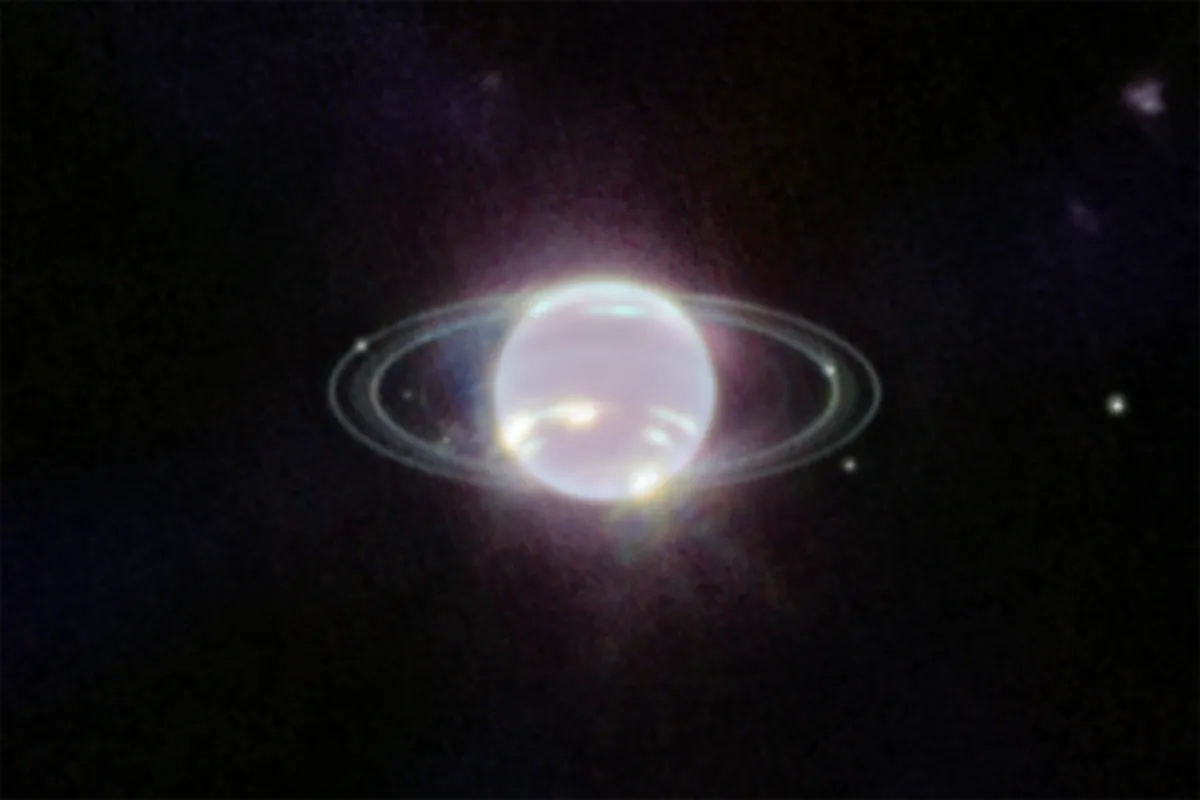
Instead, it seems some shallow process in the upper layer of the atmosphere is at play, such as turbulence created by the condensation and evaporation of moisture.
Neptune has several icy moons, including Triton.
When Voyager 2 flew past the moon in 1989, the spacecraft discovered plumes of 'smoke' coming up from Triton's surface, created by cryovolcanoes, volcanoes made of ice which erupt water, rather than lava.
Neptune is a fascinating planet, and here we'll look at some of the most interesting facts about this distant, icy world
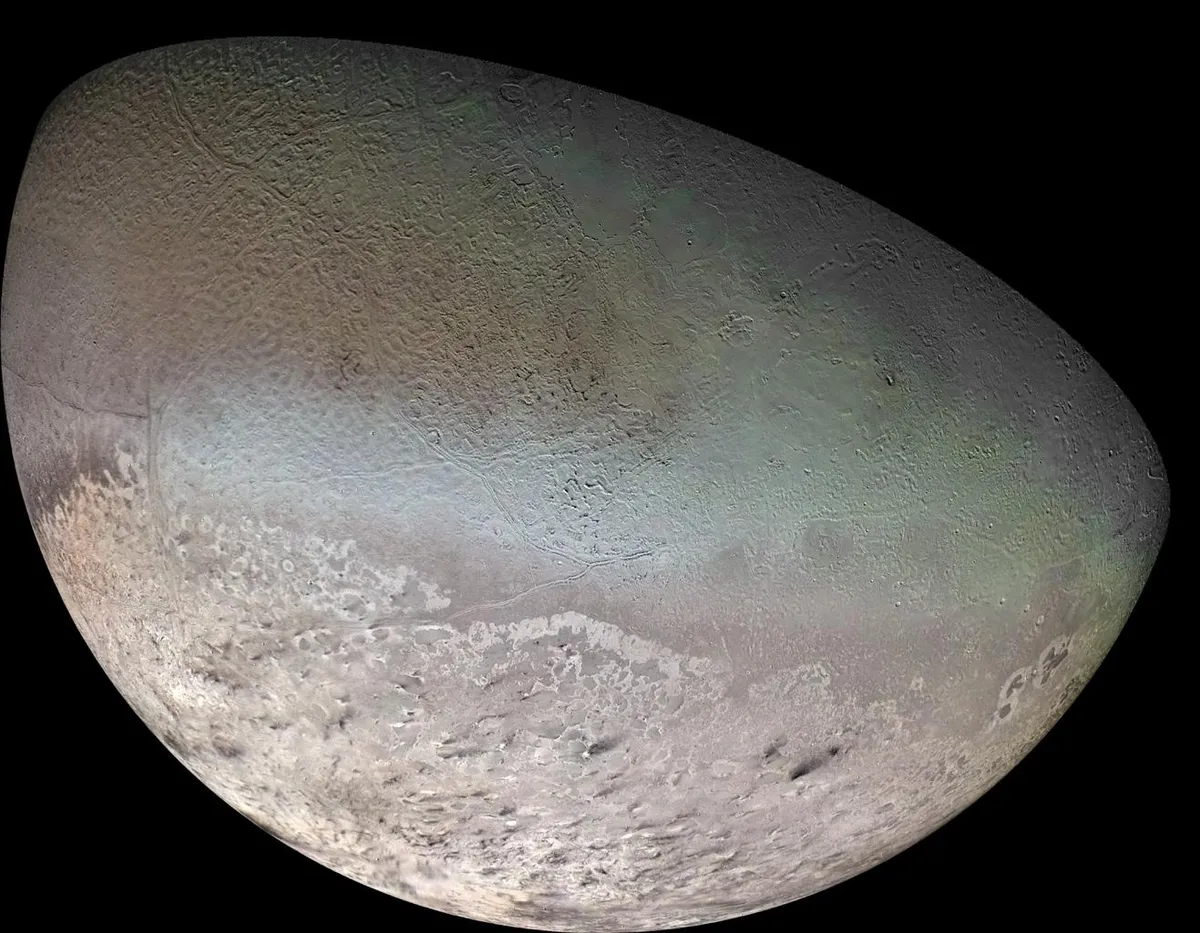
Neptune quick facts
- Diameter: 49,244km (3.87 times Earth)
- Mass: 102 trillion trillion kg (17.1 times Earth)
- Distance from the Sun: 4495 million km
- Length of day: 16.1 hours
- Length of year: 163.7 years
- Number of moons: 14
- Average temperature: -200ºC
- Type of planet: Ice giant
Observing Neptune
Neptune is completely invisible to the naked eye, so you’ll need at least a set of binoculars to find any trace of it.
As Neptune is far more distant, its disc appears smaller in the sky, meaning you’ll require a larger telescope – at least 6 inches in aperture with a 200x magnification.
At these high magnifications, your observations may be affected by seeing, where turbulence in Earth's atmosphere causes the image to shimmer.
Experiment with different eyepieces, Barlow lenses and focal extenders to find the best magnification on any given night.
While a challenge, it is possible to image the disc of Neptune.

Credit: NASA/JPL-Caltech / NASA
Neptune is the eighth and outermost planet in the Solar System
Neptune orbits the Sun at a distance of 30.1 AU (astronomical units, where 1 AU = the distance between Earth and the Sun), making it the Solar System’s furthest-flung planet.
Many of us, of course, will have learned in school that the outermost planet was Pluto, but that was before Pluto was downgraded to a dwarf planet in 2006, after scientists realised it was a) a lot smaller than had been believed and b) just one of many similar objects lying beyond the orbit of Neptune.
It’s the third most massive Solar System planet
Neptune has a mass of 1.02 x 10^26 kg. That’s 17 times more mass than Earth. Only Saturn (5.68 x 10^26 kg) and Jupiter (1.9 x 10^27 kg) are more massive.
However, it’s only the fourth largest by diameter, measuring some 49,244km across.
Uranus, with a diameter of 50,724km, is just a tiny bit larger. Earth, for comparison’s sake, has a diameter of 12,742km.
It’s the densest of the giant planets
All four rocky planets (Mercury, Venus, Earth and Mars) are far denser than any of the four giant planets.
But of the latter, Neptune snatches the mass-to-volume ratio crown with a mean density of 1.638 g/cm^3, compared to Jupiter’s 1.326 g/cm^3, Saturn’s 0.687 g/cm^3 and Uranus’s 1.27 g/cm^3.

Neptune has no solid surface
Like the other giant planets, Neptune doesn’t have a solid surface you could ever stand on, let alone land a spaceship on!
The interior of the planet is an eternally shifting mass of liquid and rock, and there is no clear line marking the boundary between the planet’s interior and its gaseous atmosphere.
It’s classed as an ice giant, despite mostly being made of liquids and gases
Like Uranus, the interior of Neptune is mostly made up of gases and water in a form known as ‘supercritical fluids’, which means these chemicals behave like liquids in some ways, and like gases in others.
Astrophysicists nevertheless call these ‘ices’ because, under typical Solar System conditions, they’d be solids.
It’s only the ice giants’ immense pressures and temperatures that keep them in a supercritical fluid state, and because that’s the form they would have been in when the planet formed.
Its atmosphere is mostly hydrogen and helium
Hydrogen makes up 80% of Neptune’s atmosphere, while helium contributes 19%.
The remaining 1% contains traces of hydrocarbons (and possibly nitrogen), as well as slightly higher proportions of water, ammonia and methane.

Neptune looks blue through a telescope
That’s due to the methane in its atmosphere. Methane molecules cluster together towards the top (outermost layer) of the atmosphere and absorb red light, which is what gives Neptune its blue-ish hue.
Its mantle is mostly water, methane and ammonia
As previously stated, these elements are present as supercritical fluids, rather than the liquids or gases we most commonly think of them as being, or the solids that the 'ice giant' name implies.
Neptune has a near-solid inner core
Compared to some planets (such as Earth), we don’t really know a huge amount about what goes on inside Neptune.
But there’s thought to be more and more rock and (actual) ice as you go deeper into the planet, with a small inner core that’s believed to be made of iron, nickel and silicate rocks.
It may rain diamonds internally
As you get deeper inside Neptune, temperature and pressure both rise – the temperature of the interior is in excess of 5,100°C (9,200°F) – which can have some unexpected effects.
At a depth of 7,000km, it’s believed that methane may decompose into diamond crystals that rain down like hailstones (a similar thing is also thought to occur on Uranus, Saturn and Jupiter), while some planetary scientists suggest the outer mantle may have solid diamonds floating in a sea of liquid carbon.
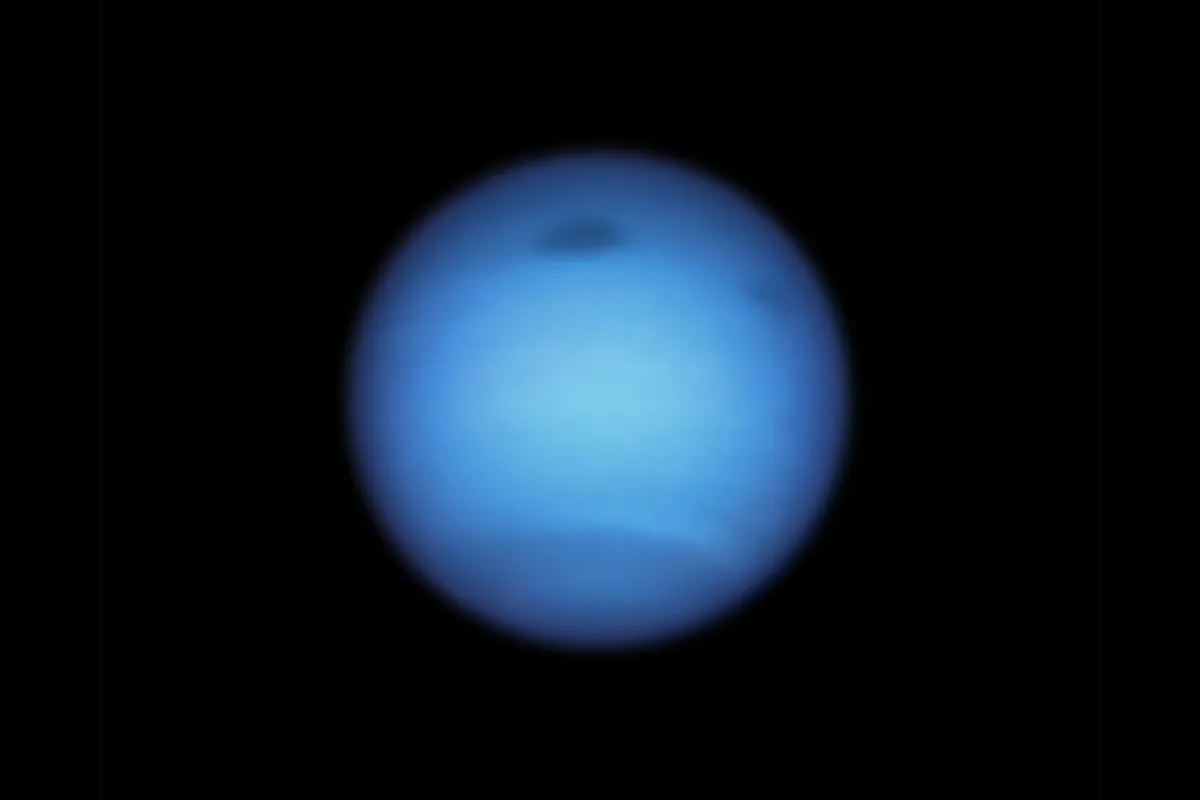
Neptune's outer atmosphere is very, very cold
The average temperature of Neptune's upper atmosphere is just 55K, or –218°C (-361°F).
Even the planet’s mean temperature – defined as the average temperature at the surface, or in the case of ice and gas giants, at the point where atmospheric pressure is equivalent to that on Earth – is just 72K (-201°C/-330°F).
Earth’s mean temperature, for comparison’s sake, is 288K (15°C/59°F), while Mars has a mean temperature of 208K (-65°C/-85°F).
It’s not visible with the naked eye from Earth
Neptune’s just too small and too far away to be seen with unaided vision from Earth, so you’re definitely going to need a telescope.
And even then you’re not going to see a huge amount because, being so far from the Sun, the planet doesn’t receive a huge amount of light.
Neptune is incredibly dim
You can’t stand on Neptune, as we’ve seen, but even if you somehow miraculously could, you wouldn’t be doing a lot of sunbathing!
The sunlight we bask in here on Earth is around 900 times brighter than the light that reaches Neptune.
If you were there at high noon, the lighting level would be roughly equivalent to a dim, late twilight on Earth.
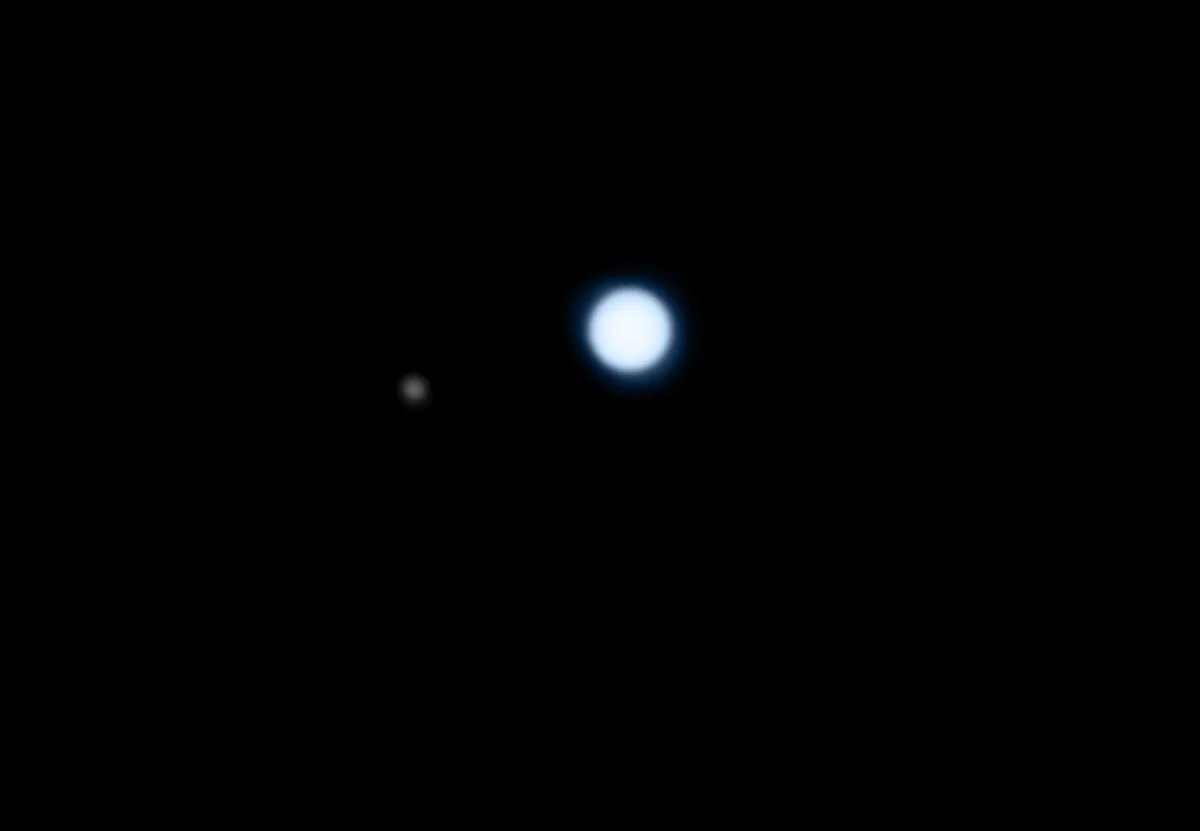
Neptune is the only Solar System planet not discovered by observation
You can see Mercury, Venus, Mars, Jupiter and Saturn from Earth with the naked eye. You can even just about see Uranus, if you know where to look.
But you can’t see Neptune. Instead, we worked out it’s there because maths and physics told us it had to be.
Its existence was first proposed in 1821
In the early 19th century, French astronomer Alexis Bouvard had compiled astronomical tables predicting the orbit of Uranus, but subsequent observations revealed some significant perturbations compared to what the data suggested.
Bouvard hypothesized that these must be due to the gravity of a previously unseen massive object lurking beyond Uranus’s orbit, though he passed away in 1843, before his hypothesis had been proven correct.
Two British and French astronomers found it at around the same time
Inspired by Bouvard’s work, both English astronomer John Couch Adams and his French counterpart Urbain Le Verrier set about calculating the position of Neptune, using some complicated maths to determine that information based on the planet’s effects on the orbit of Uranus.
Which of the two came up with the right answer first was debated for years, until astronomers decided to set rivalries aside and credit the pair jointly.

Neptune was first seen through a telescope in 1846 (sort of)
Credit for the first telescopic observation of Neptune goes to Johann Gottfried Galle, an astronomer at the Berlin Observatory.
He drew on Le Verrier’s predictions to scan the region of the sky where Le Verrier suggested the planet should be, and spotted it on 23 September 1846.
The Frenchman’s calculations were found to be out by just 1°.
It was first seen through a telescope in 1612 (maybe)
While Galle is credited with the first observation of Neptune, he probably wasn’t actually the first to spot it.
British astronomer James Challis, director of the Cambridge Observatory, had also been attempting to confirm Le Verrier’s predictions, and is thought to have spotted Neptune on 4 and 12 August 1845 – a full year before Galle – but misidentified it as a star.
In that error, he was at least in good company – close study of Galileo’s observing notes suggests he probably made the same mistake during two sessions in 1612 and 1613!
It takes 164.8 Earth years to orbit the Sun
It’s a good job Neptune’s not even remotely hospitable to life, because it’d be a horrible place to be waiting for your birthday to come around!
Years get longer the further a planet gets from the Sun because not only are their orbits that much larger, but the weaker pull of the Sun’s gravity means they travel along that path more slowly.
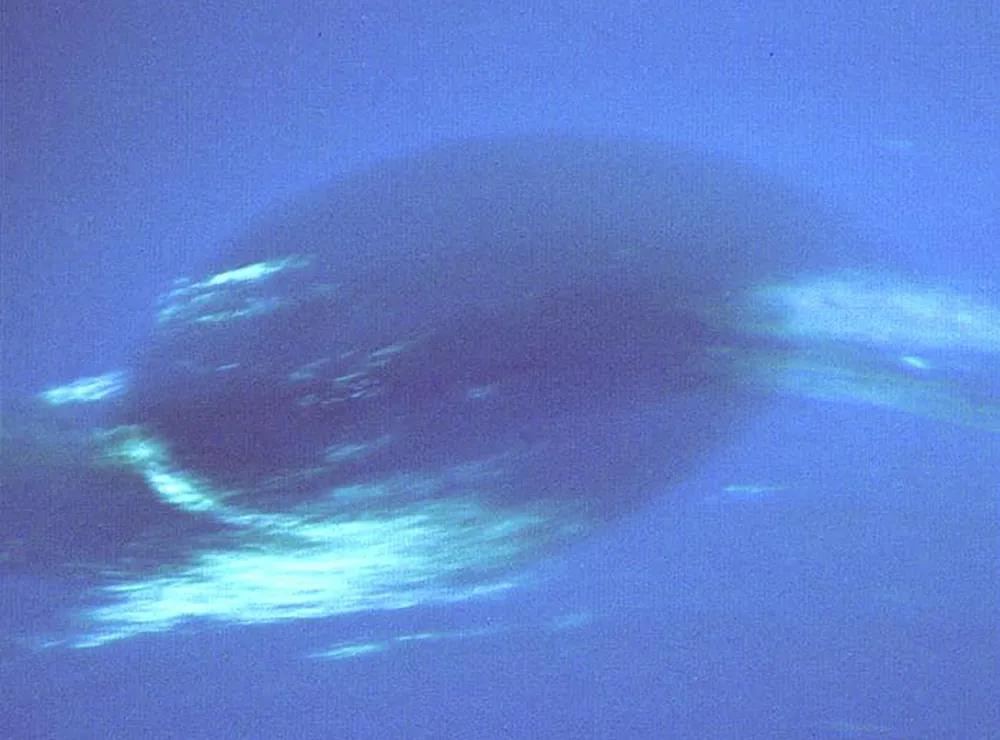
Neptune has only completed one orbit since we’ve known about it
Because Neptune’s orbit is so large, and because it moves so slowly, it’s only had time to complete one full orbit since Galle confirmed its existence in 1846 – a milestone it passed on 11 July 2011.
It’s named after the Roman god of the sea
Various names were put forward for the eighth planet when it was first discovered, including Janus (proposed by Galle), Oceanus (proposed by Challis) and even Leverrier (proposed, very modestly, by Le Verrier himself!)
But the name eventually settled on was Neptune – a nod to the planet’s blue colouration, and in keeping with the other Solar System planets, which (except Earth) are all named after Greek and Roman deities.
Neptune's nautical nomenclature is reflected internationally
Neptune has various names in different languages, but most of them have something to do with the sea and/or sea gods.
That rule of thumb holds true in Mandarin, Vietnamese, Korean, Japanese, Mongolian, Greek, Hebrew, Maori, Malay and doubtless other languages as well: the Maori ‘Tangaroa’, Malay ‘Waruna’ and Greek ‘Poseidon’ might sound like very different names, but they’re all gods of the sea.
Neptune has 16 known moons
Of Neptunes moons, Triton is by far the largest. In fact, Triton represents 99.5% of all the mass that is in orbit around the planet.
Triton is also the only one of Neptune’s moons that’s large enough to have been rounded off by its own gravity.
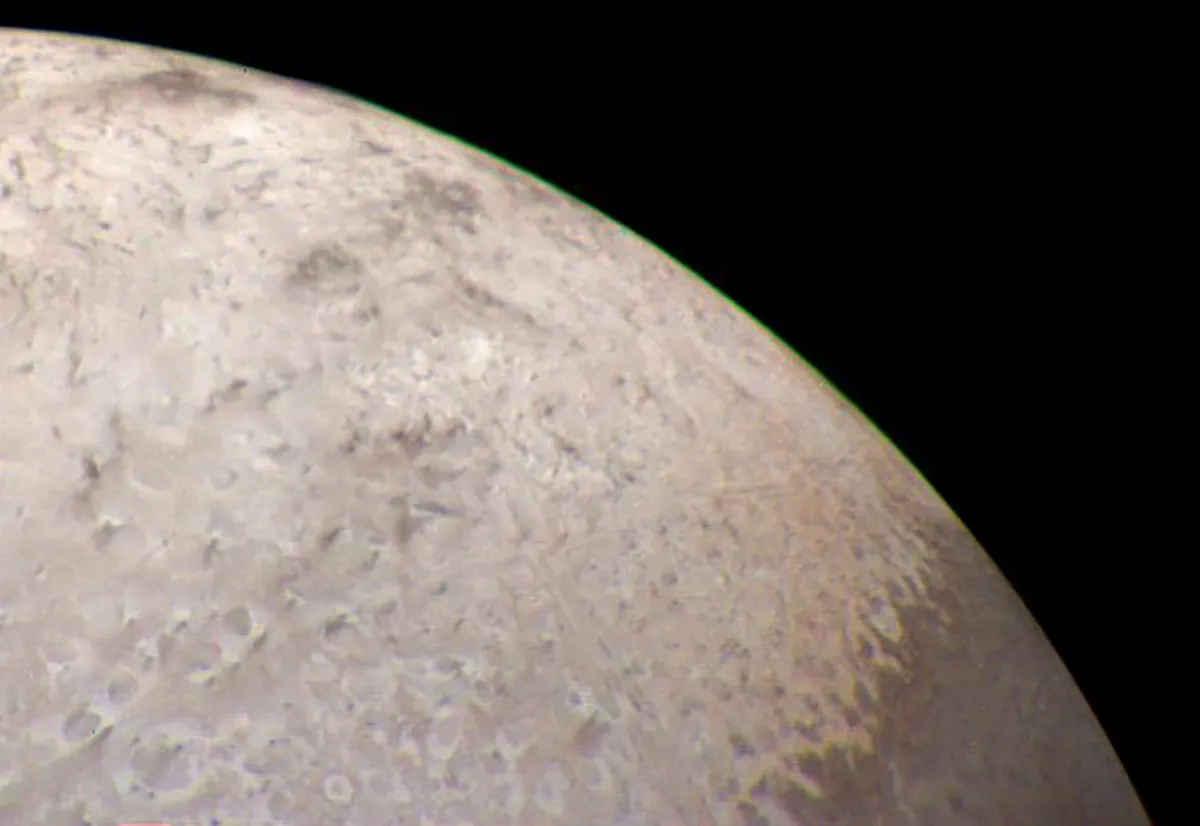
We’ve known about Triton for a long time
Just 17 days elapsed between Galle observing Neptune for the first time and British astronomer William Lassell discovering its largest satellite on 10 October 1846.
No other Neptunian moons would then be observed telescopically until the 20th century. Lassell’s discovery was given the name Triton because, in Greek mythology, Triton was the son of Poseidon, the Greek equivalent of Neptune.
Triton hasn’t always been a moon
Whereas most natural satellites from in orbit around their host planet – either from ‘leftovers’ from the protoplanetary disc, or from the debris of giant impacts – that’s not the case with Triton, which is instead believed to have originally been a dwarf planet in the Kuiper Belt, which then got ensnared by the gravity of Neptune.
Triton is one of the coldest places in the Solar System
When Voyager 2 flew by Triton in 1989, it recorded a surface temperature of just 38K (-235°C/-391°C).
That’s because the frozen nitrogen that covers most of the moon’s surface is very effective at reflecting incoming sunlight straight back out into space.
Triton’s days are numbered
Titon is moving slowly closer to Neptune with each passing year.
Eventually, it will reach the Roche limit, the point at which the tidal effects of a large body on a smaller one become powerful enough to overcome that second body’s own internal gravity, and disintegrate.
But that won’t happen for another 3.6 billion years or so.

Neptune’s second-biggest moon is Proteus
Even the second largest of Neptune’s satellites has only 0.25% of Triton’s mass, so we’re looking at a pretty steep step-down here! And the remaining 14 moons are smaller still.
Of those, perhaps the most interesting is Nereid, a small irregular moon that has one of the most eccentric orbits of any satellite in the Solar System.
Gravity on Neptune is stronger than gravity on Earth
Earth has gravity of 9.8 m/s^2 – that’s more than Uranus, Saturn and Venus, and WAY more than Mars and Mercury (which both have gravity of 3.7 m/s^2).
Neptune’s gravity is a slightly stronger 11 m/s^2 – though that’s still a long way short of the gravity of Jupiter (23.1 m/s^2).
It’s the shepherd of the Kuiper Belt
Just as the immense gravity of Jupiter is the main reason the asteroid belt is where it is, it’s the gravity of Neptune that helps keep the Kuiper Belt in place.
The Kuiper Belt is a band of icy objects that lie just beyond the orbit of Neptune – including the dwarf planets Pluto, Ceres, Makemake, Eris and Haumea.
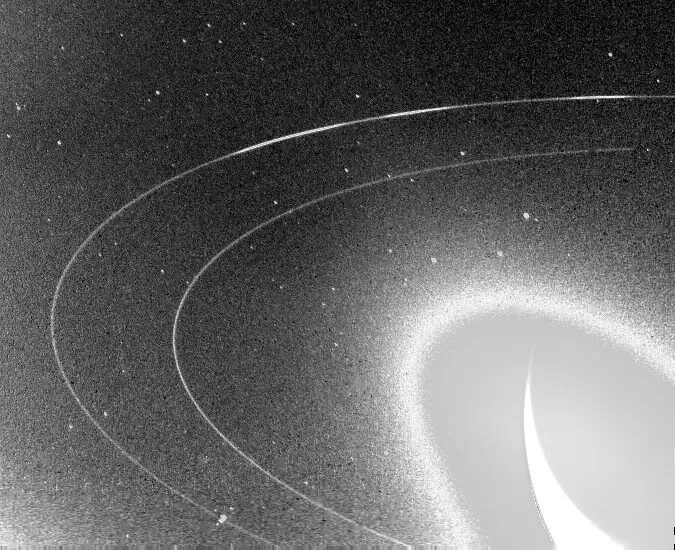
Neptune has a faint ring system
The fact that Neptune has rings is a fairly recent discovery – we didn’t know they were there at all until 1968, and it wasn’t until 1984 the scientists concluded there must be more than one of them – a hypothesis proven correct by Voyager 2 in 1989.
Today, we know there are five rings – working outwards from the planet these are called the Galle, Le Verrier, Lassell, Arago and Adams rings.
The Adams ring is made up five individual arcs
These have been dubbed Fraternité, Egalité 1, Egalité 2, Liberté and Courage.
Quite why these five arcs haven’t stabilised into one complete, coherent and uniform ring is a question for which astrophysicists have yet to come up with an answer.
Neptune has a very active atmosphere
The atmosphere of neighbouring Uranus, which is in many ways quite similar to Neptune, is famously inert – but that’s not the case on Neptune.
The planet is banded by clouds of different gases at different altitudes/pressures, and winds regularly reach speeds in excess of 2,200 km/h (1,300 mph).
In fact, Neptune can boast the strongest sustained winds to be found on any Solar System planet.
Giant storms are common
When Voyager 2 visited in 1989, it detected a Great Dark Spot on Neptune.
Like Jupiter’s Great Red Spot, this was the top-down view of an enormous cyclone – but Hubble images revealed that it had disappeared by 1994.
Since then several other major cyclones have been observed, including two dubbed the Small Dark Spot and the Scooter.
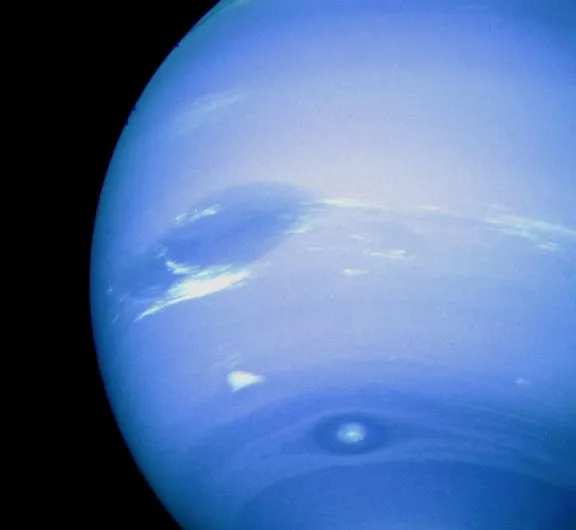
Neptune's magnetic field is tilted
Neptune’s magnetic field sits at an angle of 47° relative to its axis.
It’s believed this is due to the flow of electrically conductive fluids within the planet’s interior, which has a dynamo effect.
As a result, while Neptune experiences aurorae, on Neptune these occur at mid-latitudes, rather than at the poles.
Aurorae are weaker on Neptune than on Earth
Aurorae occur when charged particles coming from the Sun (the solar wind) crash into, and are rebuffed by, a planet’s magnetosphere.
But because Neptune’s so much further from the Sun than Earth, fewer such particles ever actually reach it – hence its relatively feeble auroral displays.
The whole planet is significantly slanted
Neptune is tilted by 28.32° relative to its axis, just as Earth is titled by 23° to its own.
As a result, Neptune experiences seasons just like Earth does, the only difference being that on Neptune, spring, summer, autumn and winter each last for over 40 Earth years!
Scientists aren’t sure how the planet formed
By rights, a planet like Neptune shouldn’t have emerged where we see Neptune today.
One possible explanation is that it didn’t form by the usual process of core accretion – where a small clump of material gathers more material over time – but was carved out of the Sun’s protoplanetary disc itself.
Most scientists believe, however, that Neptune first formed a lot closer to the Sun than it is now, before migrating outwards.
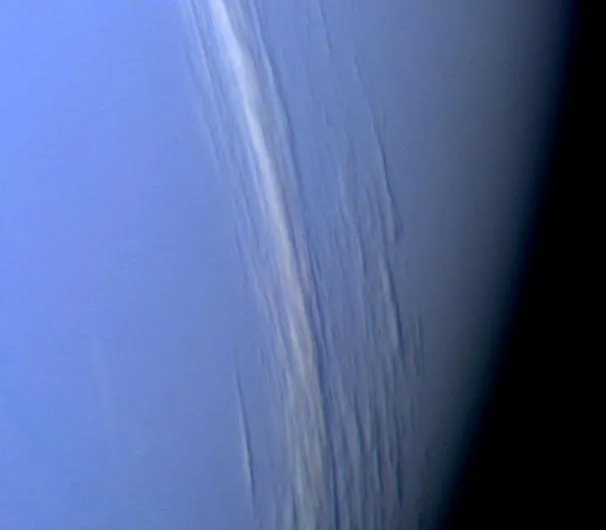
Neptune has an unusually hot thermosphere
While Neptune’s stratosphere – the upper reaches of its atmosphere proper – gets very cold (-215°C), the surrounding thermosphere is unexpectedly hot at 477°C (890°F).
The reasons for this aren’t clear – it may have something do with gravity waves or it may be a result of the thermosphere interacting with the planet’s magnetic field.
Only one spacecraft has ever visited
The main reason we know so little about Neptune is that Voyager 2 is the only spacecraft ever to venture anywhere near it.
That was way back in 1979 when, compared to today, both the number of measurements that could be made and the accuracy of those measurements were severely limited.
Still, while it was there, Voyager 2 did provide most of the best information we have on the planet, confirm the existence of the ring system and identify six new moons.
China may launch a Neptune mission in the coming years
Over the decades since Voyager 2 made its Neptune flyby in 1979, there have been various proposals for further NASA missions, but they’ve all been either rejected, cancelled or had their itineraries and objectives rewritten.
At time of writing, the most likely candidate for a return visit is China’s proposed Shensua mission, which if accepted, will send a Voyager-like probe first to Neptune and then on into the Kuiper Belt.
But even that mission has yet to be given the official go-ahead by the Chinese National Space Administration (CNSA).
What are your favourite facts about Neptune? What did we miss? Let us know by emailing contactus@skyatnightmagazine.com

